My ultimate guide to Hoi An Central Market | What to see
Today, I’m taking you to explore the Central Market of Hoi An.
It’s a must-visit for any traveler looking to experience the bustling everyday life of Hoi An residents, while also having the opportunity to taste local culinary dishes without breaking the bank.
The market is divided into two parts: one is a food court made up of food stalls, and the other is a traditional market where locals and restaurants come to buy their meat. For tourists, of course, the food court will be the most interesting.
Let yourself be guided by the intoxicating scents, characteristic sounds, and warm interactions that make the Central Market of Hoi An a must-visit on your Vietnamese journey.
History of Hoi An and Its Central Market
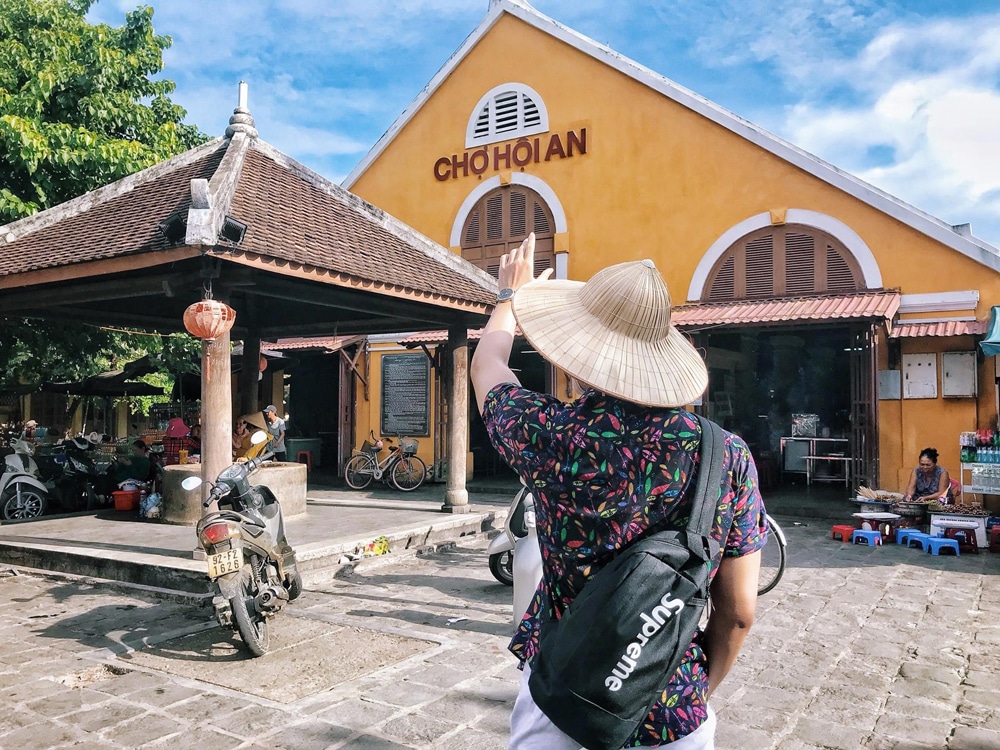
From the 15th century, Hoi An established itself as a crucial economic crossroads for the Cham empire, becoming a major pivot for trade along the Vietnamese coasts. Throughout the 16th and 17th centuries, under the influence of the Nguyen lords, the city transformed into an international hub for merchants from China, Japan, and Europe, and was considered one of the most prosperous ports in Southeast Asia.
Despite the decline of its commercial role in the 18th century in favor of Da Nang, the mercantile spirit of Hoi An endures. Today, the city is recognized by UNESCO as a remarkable and well-preserved example of an Asian trading port. Come explore the rich commercial past of Hoi An and its enduring influence on the culture and architecture of this enchanting city.
Hoi An Central Market
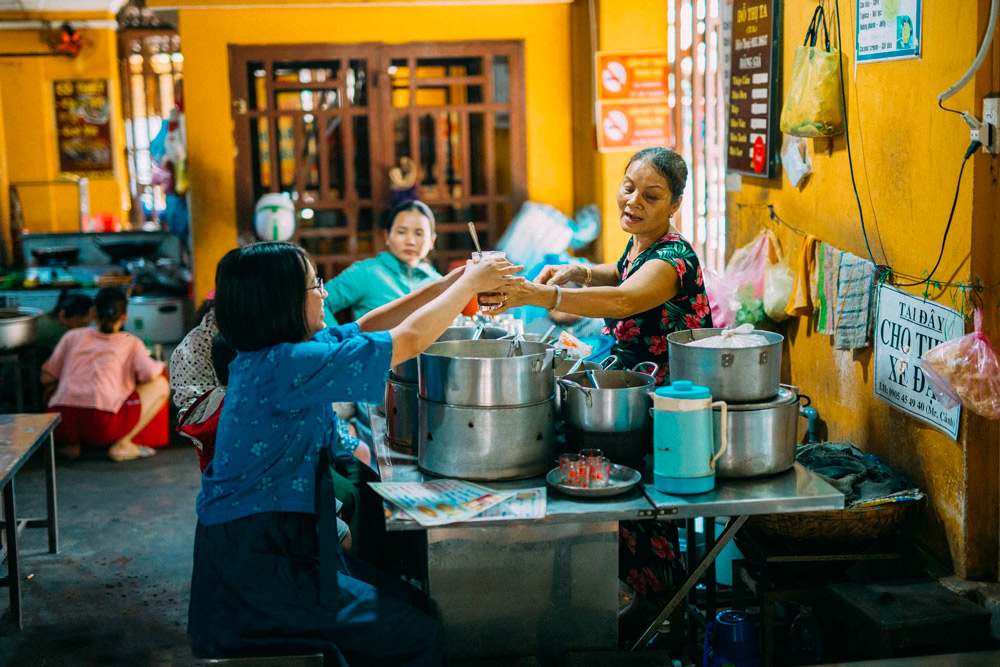
Established in 1848, the Central Market of Hoi An is more than just a sales point; it is the beating heart of Hoi An, a link between the past and the present. Initially set up on Nguyen Thai Hoc street, this historic rectangular building was organized into distinct zones for fresh produce, meat, and fish, with adjacent wells designed to meet the needs of merchants and local residents.
Centuries later, the Central Market continues to buzz with activity, offering a mix of fresh produce, meats, fish, and a food court that attracts food lovers. Although the original building was replaced in the early 2000s by a more modern structure, the new market was designed to blend harmoniously into the historic fabric of Hoi An, giving the impression it has always been an integral part of the city. This place remains a window into the rich commercial heritage of Hoi An, inviting you on a journey through time through its bustling aisles.
Where is Hoi An Central Market Located?
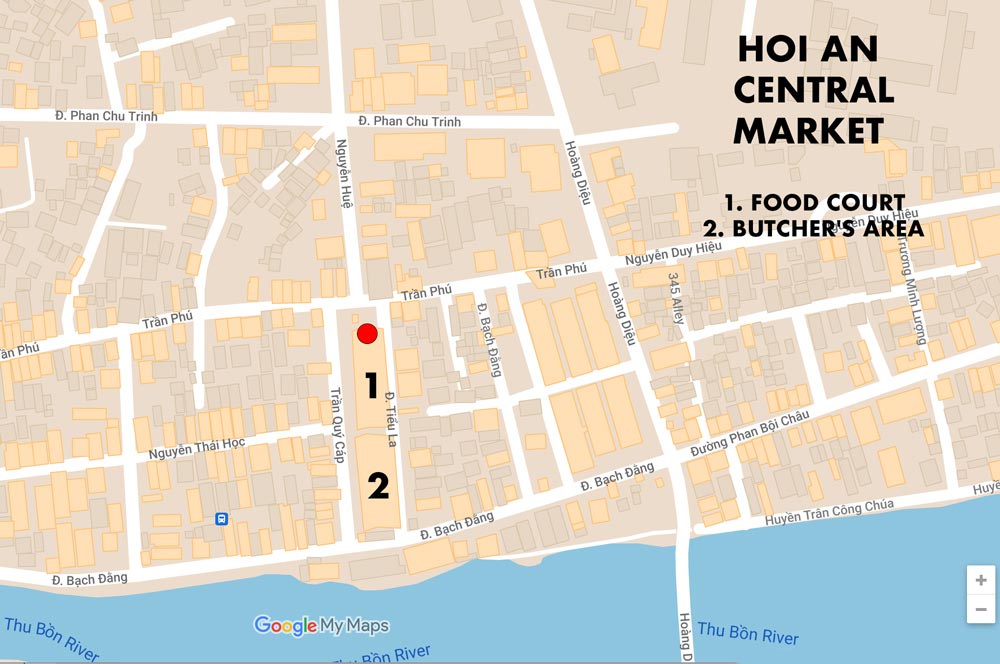
The Central Market is within walking distance of all the main cultural attractions of Hoi An, on the east side of the city. You will find the entrance to the food court at the intersection of Tran Phu and Nguyen Hue streets.
Just look for the large yellow building with the massive red words “Cho Hoi An” (“Cho” is the Vietnamese word meaning “market” and “Hoi An”, I think you get it).
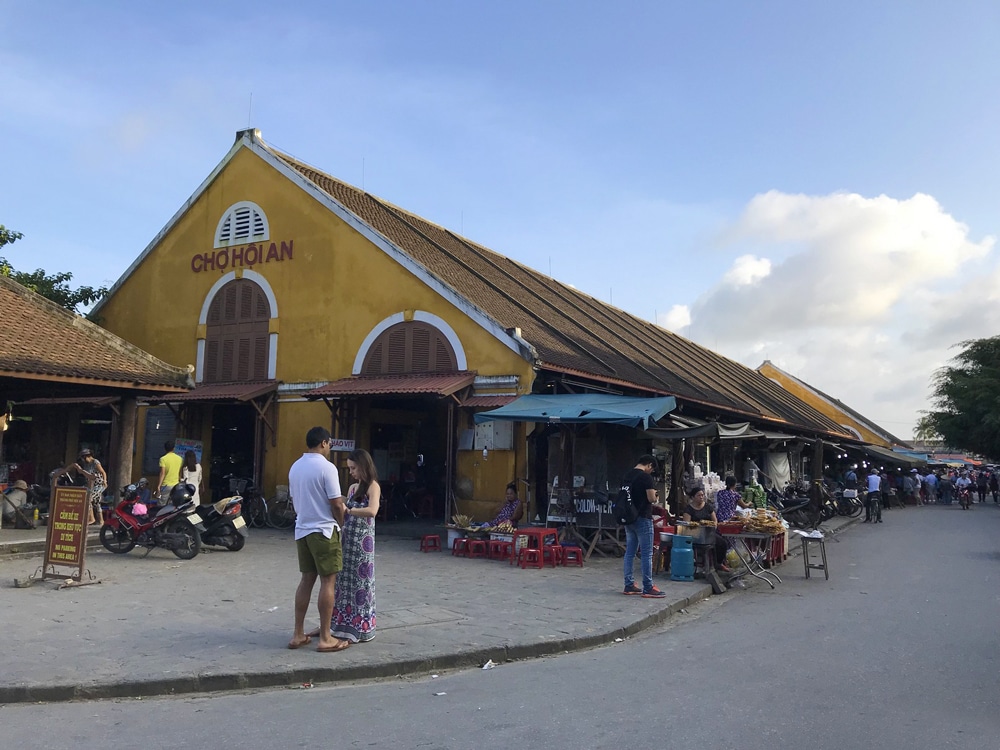
Across from the Central Market building is a well where vendors obtain water to make Hoi An’s famous Lau noodles. These are used to prepare Hoi An’s signature dish, Cao Lau, which you can try at the Central Market for 35,000 VND (~1.29 €).
The Central Market is lively from sunrise until nightfall. The number of street vendors varies by day, but the Central Market is by far the most popular and active market in all of Hoi An.
What to See at Hoi An Central Market?
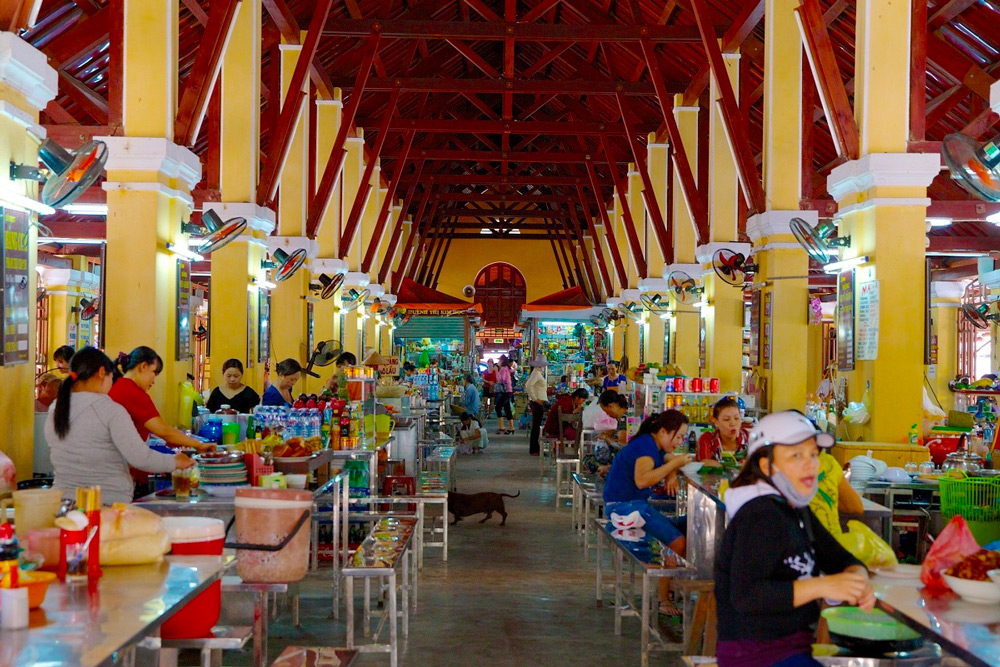
The Central Market of Hoi An is divided into two distinct sectors, each offering a unique experience.
On one side, the stalls displaying meats on cardboard, out in the open under 35-degree heat and directly on the ground, may be surprising and confusing for most tourists. This is also what most of the tourists I meet want to discover.
On the other, a food court that awakens the senses with its local flavors.
For those eager to capture the morning buzz of the market, a visit as early as 5 am is recommended. This is when you can procure fresh fish and meat, which will be available throughout the day.
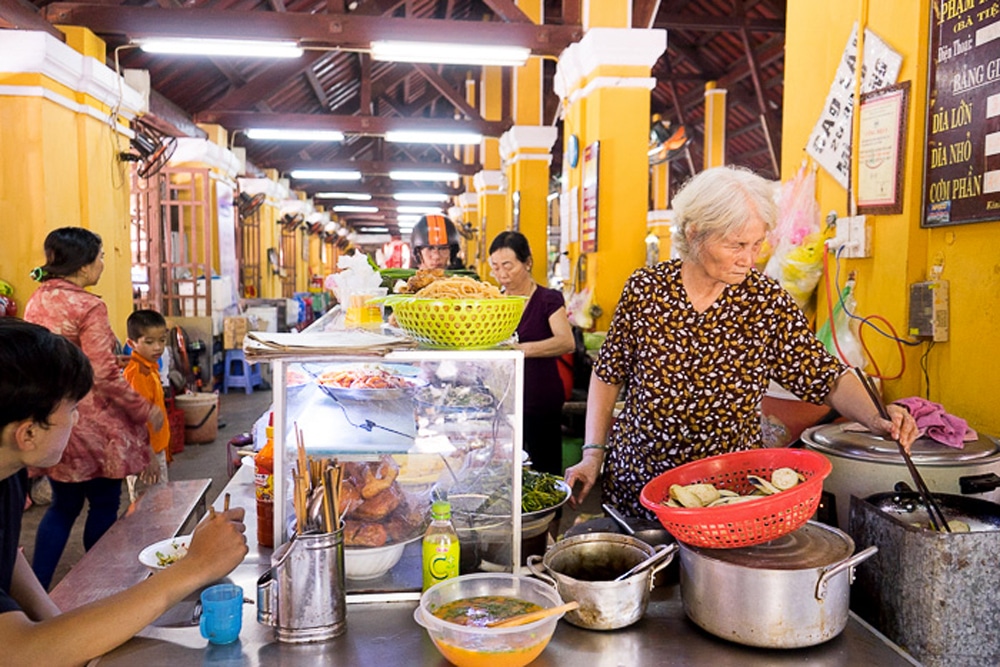
However, the real attraction of the Central Market is undoubtedly its food court. This is where visitors can discover Hoi An’s culinary delights at a low price. Among the must-tries are the Cao Lau mentioned earlier, Banh Xeo, White Roses, Banh Mi, and much more, offering you an authentic immersion into local gastronomy.
The prices range from 25,000 VND (~0.90 €) to 50,000 VND (~1.80 €). It goes without saying that you won’t find a better value for money in Hoi An. That’s why I recommend a visit to the Hoi An market during your stay in the yellow city.
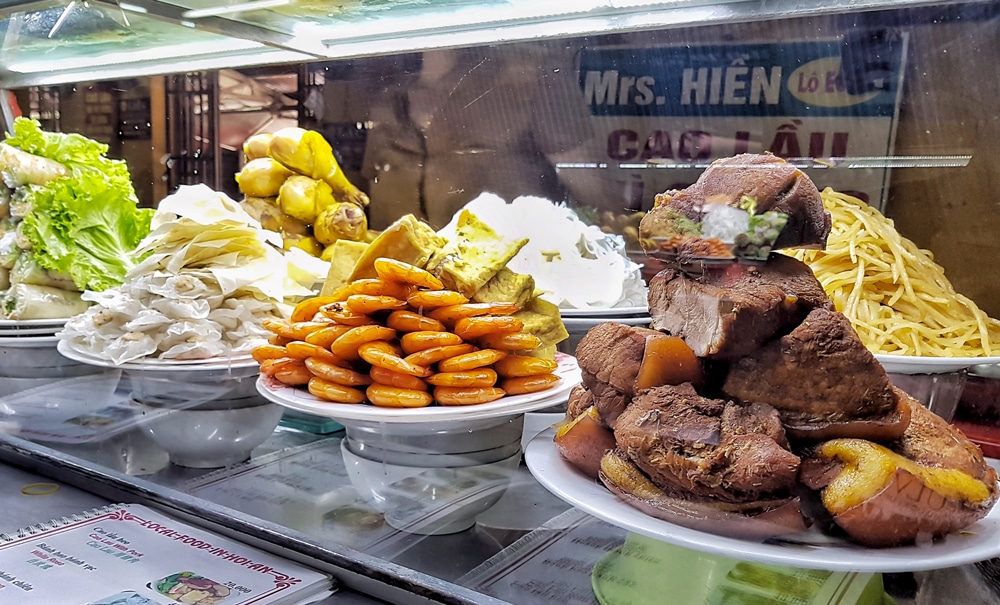
This market is not just a place for locals to shop but also a culinary adventure waiting for you, promising to delight both gourmets and the curious.
Did you know ?
Around the Central Market (to the left, outside), you will find the Banh My Phuong 2 stand, which is actually the historic location of Banh Mi Phuong, one of the most famous Banh Mi in Hoi An and recommended by the well-known culinary chef Anthony Bourdain. It’s just as good but with fewer tourists.
Contrary to what one might think, this is not a copy.
How to Choose a Stand to Eat At?
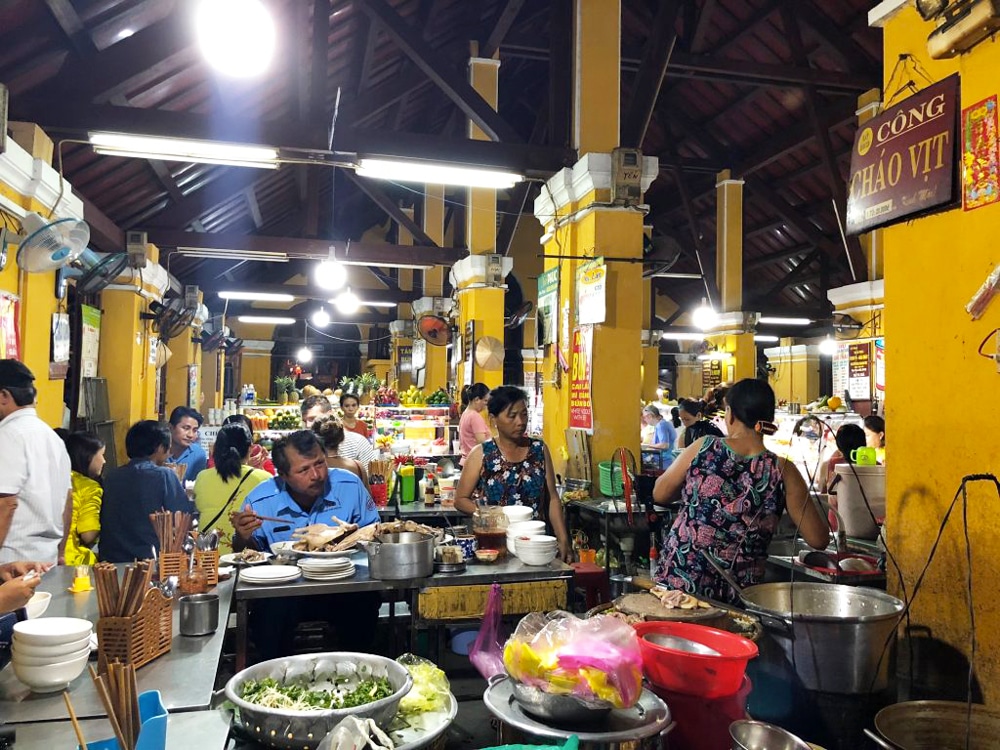
Selecting a stand at the Central Market of Hoi An may seem daunting, but a few tips can guide you. In the past, each stand focused on a single signature dish, but times have changed. Today, influenced by the influx of tourists, the stands present a variety of dishes to appeal to an international clientele. You will notice that many of them feature a similar presentation, with ingredients arranged in an identical manner, creating an attractive uniform visual effect.
However, for a more authentic experience, move away from the central aisle frequented primarily by tourists and head towards the side aisles, favored by locals. This is where the real culinary gems are found, away from the tourist-beaten paths.
The Minh Tu stand, for example, is a must-visit for lovers of Banh Xeo, the famous Vietnamese crepe.
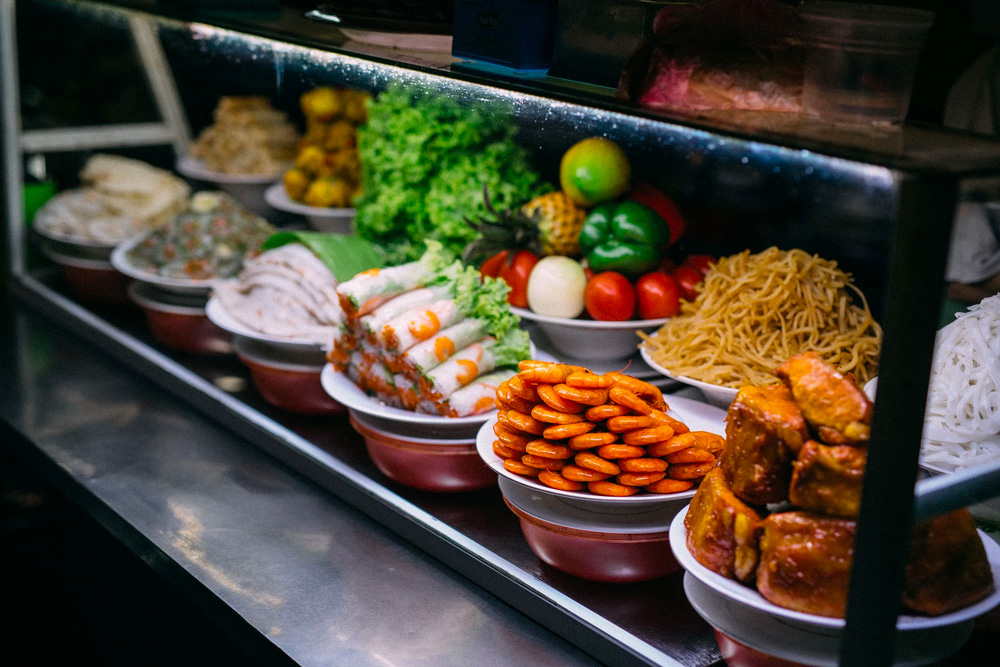
Also, don’t forget to check behind the stand. Clues like still-greased pans or hot skillets can testify to the freshness of the dishes. Keep in mind that some vendors may share preparations with other stands during busy times.
To judge the quality of a stand, observe the other customers: a large number of Vietnamese seated at a stand are often a sign that you have found a choice stand. Their presence is a guarantee of quality and authenticity, confirming that the stand is approved by those who know the local cuisine best.
When to Visit the Food Court at Hoi An Central Market
The food court is open every day from 6 am to 7 pm. This is great news if you’re an early riser, as you can grab a traditional and quick breakfast here. (Just note that the menus remain the same throughout the day and do not include Western dishes like bacon and eggs.)
There is almost constant bustle in the food court, which occupies the entire interior of the yellow building, but it fluctuates throughout the day.
Around the Market
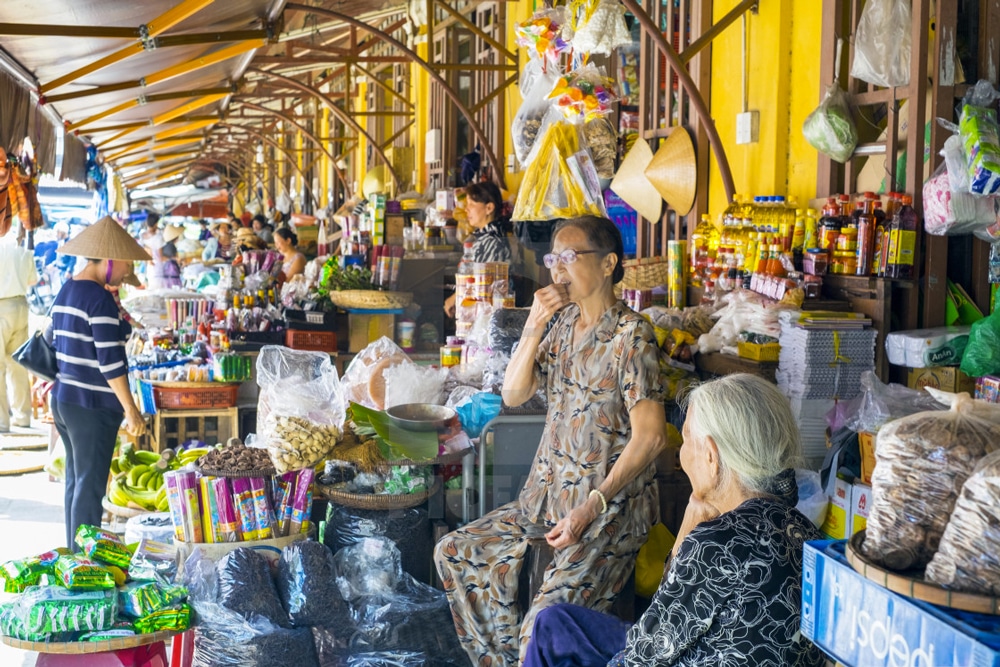
All around the Central Market, you can purchase coffee and other pantry items, wood carvings, bowls, and souvenirs from Hoi An. You’ll find cobblers, fruit and vegetable stands. Heading towards the second or back building of the market, you’ll see vendors selling stacks of freshly prepared noodles, the same ones you can try inside the market if you order Mi Quang or Cao Lau.
My Opinion
Even if you only have a little time to spend in Hoi An, don’t miss the Central Market: eating in the food court is the perfect reason to go there. For just a few dollars, you can get a classic example of some traditional Hoi An dishes, as well as a true Vietnamese market experience.
While the Central Market is touristy, it remains traditional enough to be worth a visit.

